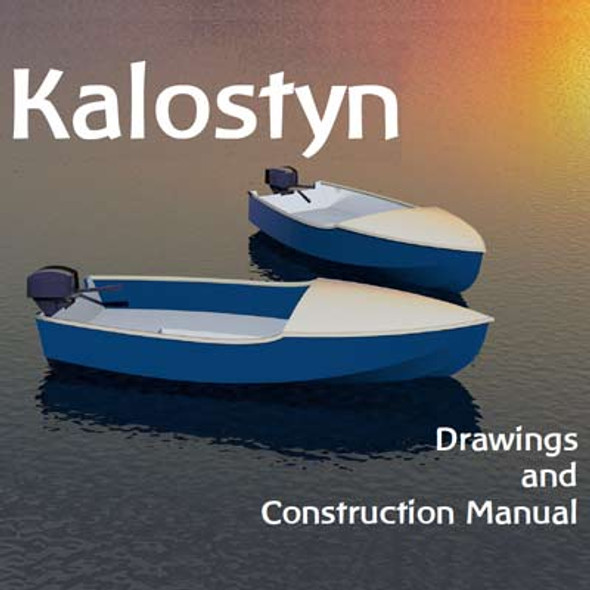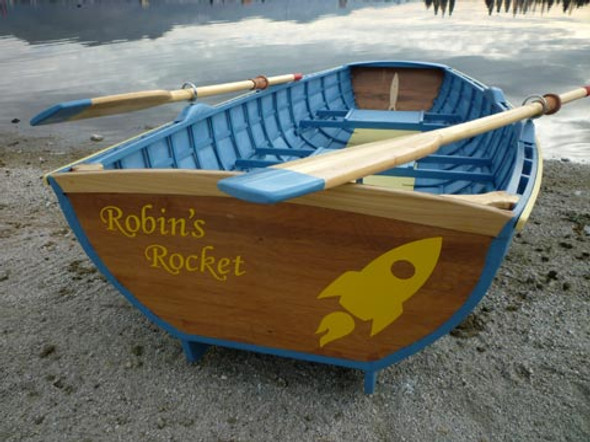Description
Free plans. To download the file, click HERE
The hull
This boat is intended as a lightweight pocket cruiser with easily driven lines and a traditionally inspired sailplan. The epoxy lapstrake hull is based on a proven US type.
The design is a deliberately lightweight and small interpretation of the competition's aims to ensure that the boat can be rowed and trailored on land by two people relatively easily. A small outboard (not shown) may also be used.
An important innovation is the addition of twin daggerboards designed to provide both upwind performance and support when the boat is grounded - streamlined blocks are attached part way up the length of the twin daggerboards to act as 'legs' when bottomed out. This feature is particularly important in the UK, as our small boat cruising enthusiasts tend to prefer to sleep on board up a creek in preference to using tents at the water's margin. This may seem a curious habit given the tides seen in the British Isles, but may be due to the traditional hostility of the British landowner.
I envisage a T-section rudder to allow a short rudder to be used that will not require to be withdrawn when beaching. The long skeg is intended to provide a degree of directional stability and my general arrangement includes a pinrail that I hope will allow the skipper of this boat to make a cup of tea from time to time.
In my view, this boat's main drawbacks are:
- that it is a relatively complex building job
- that it is best sailed flat, and
- that the accommodation has been kept to a minimum in favour of an easily driven hull.

The sailplan
The yawl that's nearly a schooner, the schooner that's nearly a yawl, and the periauger with two similar sails have been popular small boat rigs in many places for a very, very long time, even if they are rarely seen now. I was recently reminded of this when I began to research a British inshore working boat, the Humber gold-duster, and again when considering the Hampton boat and the Kingston lobster boat as described by Howard Chappelle and John Gardner. Each of the three types were seen sporting twin spritsails of similar size (though not always in the latter two cases), and each were smart sailers.
In particular, the Duster evolved for the purposes of racing to meet ships coming in to the Humber estuary in order to sell boatman's services, which I feel must be some sort of recommendation. Spritsails also have a reputation for dumping wind during gusts, which must be an important consideration when using a lightweight boat such as this for coastal cruising.
So why not bring the twin spritsail configuration back into use?
Finally, I should say that I think anyone who built this boat and wished to rig it very cheaply might find that using two second-hand Laser rigs will serve, at least on a temporary basis.

The accommodation
In line with the confining lines of the hull and the need to keep windage to a minimum, the enclosed sleeping area has been made as small as possible. However, I envisage a tent slung over the boom with the purpose of creating a sheltered cooking and living area when at anchor, or when beached. Storage areas are available under the cockpit seating.
Safety and seaworthiness
Most boats this shoal are really just large dinghies, and this is no exception. It cannot normally be made self-righting, despite the ballast in its keel and the natural buoyancy of the wooden masts, and so I feel it is important to keep the emergency buoyancy at the ends - the cabin and under the after-deck - with the cockpit relatively open in order to give the crew a chance of righting the boat in a capsize. (I have too many times struggled to right a boat that floats too high out of the water on its side.) The storage under the cockpit seating is therefore enclosed only by a 'basketwork' of slats.
Using scantlings based on 6mm ply for the hull and 5mm ply for decks, doghouse etc, I estimate that the combined weight of the hull and gear is 490lbs. Allowing for 650lbs of crew in the cockpit, and 72.5lbs of gear in the each of the cabin and cockpit storage areas places the centre of gravity at just 10ft aft of the stem.
By a happy coincidence, at a displacement of 1350lbs, the centre of buoyancy is likewise 10ft from the stem.
I therefore suggest that any additional ballast should be placed so that it is centred at this same point. On the principle that ballast should be distributed over a reasonable distance fore and aft, I would suggest a 220lb iron shoe 12ft in length, 3in wide and 2in deep be attached to the keel with its centre at ten feet from the bows. I suggest that sandbags may be used to provide trimming ballast as needed.
Please consult with the designer if you are considering building this craft at gmatkin@gmail.com . If constructed, this craft should be built to the scantilings indicated; in addition the masts should be of the best Oregon pine.
Essential statistics
- Length overall 236in
- Length waterline 209in
- Length trailering 236in
- Beam 68in
- Draught 43in (boards down), 12.5in (boards up)
- Interior headroom 39in
- Displacement 1350lbs
- Trailering weight 700lbs
- Sail Area(s) 140sq ft in two spritsails of equal size
- Mast height AWL 158in







